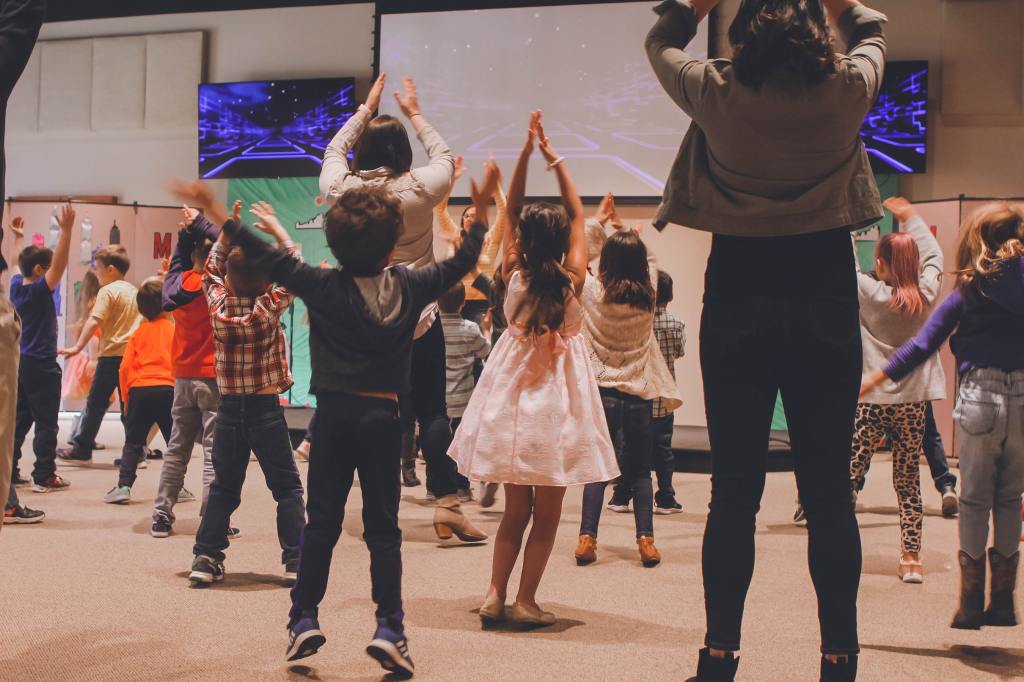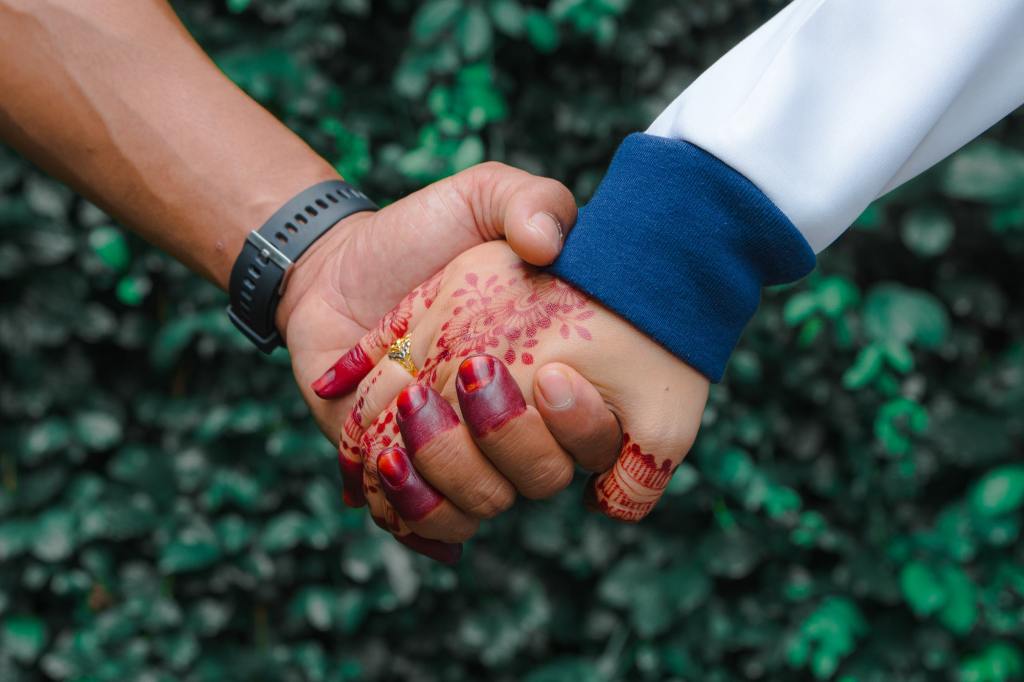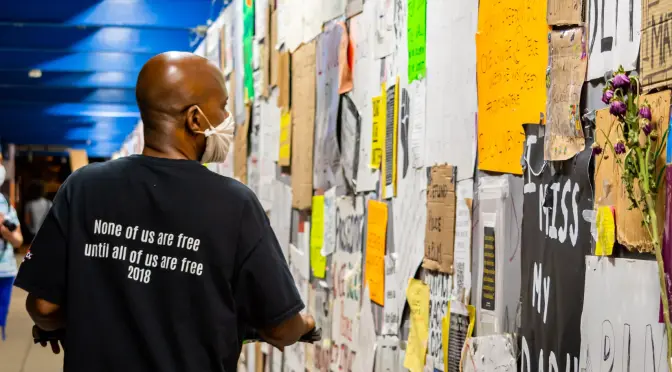Written by Isabel Singer
Reposted with permission from American Perceptionalism, a site dedicated to examining how museums are reinventing themselves in a changing world.
As I watch museums lay off thousands of highly qualified underpaid staff during this pandemic, I have been asking myself why I keep investing in museums.
Museum staff are overwhelmingly white, straight, and able-bodied, and museum leaders are overwhelmingly male. For centuries museums have told stories about a diversity of people, presenting these stories from the perspective of those in power. Thereby, museums have bolstered white supremacy, sexism, colonialism, ableism, heteronormativity, and a lot of other icky isms. The pandemic layoffs are only exacerbating this situation.
In fact, museums were explicitly designed to reinforce these icky isms. In a blog post for the SuperHelpful newsletter, I wrote about the book Museums and the Shaping of Knowledge by Eileen Hooper-Greenhill, relaying her argument that:
“our modern museums are based on the model of early nineteenth century French museums. The French government invested in these museums to mold French people into ‘good’ citizens. They empowered experts (curators) to organize collections and tell visitors what to think about the world (interpretation). Through their interpretation, the experts encouraged individuals to obey societal norms, such as those around dress, communication style, physical gesture, family structure, sexual ethics, gender presentation, and more. They marked people and objects that strayed outside of these norms as disruptive or dangerous. The French model spread throughout Europe, leading to many of the best practices and physical infrastructure of nineteenth and twentieth century museums. Although the way we structure museums has significantly evolved over the past two hundred years, much of our practice is still rooted in this public museum model.”

I don’t want to live in the world that museums have helped to create.
I want to help create a world where…
- Every person matters equally. Everyone is needed. No one is disposable.
- “Normal” is not venerated. Difference is just different, not disruptive or dangerous.
- Empathy is the most venerated trait. Not intelligence. Not wealth.
- Individuals and organizations are judged by how well they live their values. Feelings and statements are not enough.
Maybe I am crazy, or hopelessly naive, but I believe museums could become a nursery for a better world … if they make a lot of changes.

Museums were designed to tell stories about the world; we can change what stories they tell and how they tell them. As Hooper-Greenhill reminds us in her conclusion to Museums and the Shaping of Knowledge:
“the radical potential of material culture, of concrete objects, of real things, of primary sources, is the endless possibility of rereading.… because meanings and interpretations are endlessly rewritten, we too can seize the opportunity to make our own meaning, and find our own relevance and significance” (Hooper-Greenhill, 1992, p. 215).
However, telling new stories about material culture and primary sources is as much about who tells the stories as it is about the content. We need to empower historically marginalized groups to tell their own stories in our spaces. In the book Emergent Strategy, the social justice organizer adrienne marie brown describes the type of storytelling I dream of more eloquently than I ever could. “We are in an imagination battle,” brown states.
“Trayvon Martin and Mike Brown and Renisha McBride and so many others are dead because, in some white imagination, they were dangerous.… Imagination gives us borders, gives us superiority, gives us race as an indicator of capability. I often feel I am trapped inside someone else’s imagination and I must engage my own imagination in order to break free…. We have to ideate – imagine and conceive – together. We must imagine new worlds that transition ideologies and norms, so that no one sees Black people as murderers and Brown people as terrorists and aliens, but all of us as potential cultural and economic innovators. This is a time-travel exercise for the heart. This is collaborative ideation” (brown, 2017, pp. 18-19).

In order to create space for real “collaborative ideation” in museums, we need to transform our view of audiences; instead of seeing passive visitors, we need to invite active co-creators. We need to transform our storytelling process by becoming participatory cultural institutions. In The Participatory Museum, Nina Simon defines a participatory cultural institution as:
“a place where visitors can create, share, and connect with each other around content. Create means that visitors contribute their own ideas, objects, and creative expression to the institution and to each other. Share means that people discuss, take home, remix, and redistribute both what they see and what they make during their visit. Connect means that visitors socialize with other people—staff and visitors—who share their particular interests. Around content means that visitors’ conversations and creations focus on the evidence, objects, and ideas most important to the institution in question.” (Simon, 2017)
I believe that when participatory cultural institutions facilitate collaborative ideation, they help change who holds power in our society and how that power operates. Tony Bennet argues in the introduction to his essay collection Museums, Power, Knowledge that historically, when museums changed the stories they told, they served “as a prelude to the production of new regimes of truth” that “in turn, produce their own distinctive power effects.”
For example, before the British Great Exhibition of 1851, museums told stories that made “royal power manifest and, accordingly, the pinnacle of representation governing the ordering of things was the prince or monarch.” The Great Exhibition told new stories centered around capitalism and industrialization. Following the Exhibition there was a huge boom in the development of public museums. The new approach to storytelling fostered at the Exhibition helped shape these new museums into places that produced and reinforced governmental and biopolitical power, instead of the older system of sovereign power (Bennett, 2017). When we democratize storytelling in museums, we help produce a more equitable distribution of power in our society.

The most effective way to make museums participatory is by pivoting our primary focus away from the institutions and their stuff and towards investing in relationships and people – custodians, security guards, ticket takers, docents, educators, exhibit developers, registrars, project managers, co-creators (formerly known as visitors), board members, executive directors, and other stakeholders. As the Cooper Hewitt toolkit for transforming the museum experience states, “people, not objects, are the vital spirit of museums” (Brackett et al., 2021, p.10).
Investing in relationships is the best path towards change because, as adrienne maree brown taught me, change happens in fractals. “The patterns of the universe repeat at scale,” she said.
“What we practice at the small scale sets the patterns for the whole system… transform yourself, transform the world. This doesn’t mean to get lost in the self, but rather to see our own lives and work and relationships as a front line, a first place we can practice justice, liberation and alignment with each other and the planet.” (brown, 2017, p. 52-53)
In short, if we invest more in the people who make museums, we can make museums work for more people.
Most of the museum people I know, especially emerging professionals, are smart, idealistic, hardworking, thoughtful, and care about making our society more equitable. I am asking myself “how might we advocate to get museum people the resources they need to transform museums into nurseries for a better world?” – resources like training in facilitation techniques for collaborative ideation, the time to build strong relationships with prospective co-creators, the freedom to be more creative, and the salaries they deserve for their expertise and experience. I am brainstorming ways can we better support each other. Will you brainstorm with me?
I have a few small ideas to start us off:
- Join the Cultural Equity Learning Community, “an online learning community open to arts and culture leaders committed to building racial equity in the sector. The CELC includes a go-at-your-own pace two-unit course with complimentary wrap-around learning supports.” I participated in the 2020 course and gained a peer group of three other people who I speak with monthly about how to live my values.
- Donate to the Museum Workers Speak Fund, which provides direct aid to museum staff who have lost their jobs during COVID
- Follow the Family Race Exhibit Collective, a “grassroots anti-racist collective, composed mostly of BIPOC museum professionals, dedicated to inspiring social change through inclusive and engaging experiences both within our collective and in our exhibition projects:”
- Follow museum workers’ unions across the nation, such as the Carnegie Museums of Pittsburgh union, the Walker Museum of Art union, the Museum of Fine Art in Boston union, the Philadelphia Museum of Art union, the Tenement Museum union, the Guggenheim union, Frye Art Museum union, Children’s Museum of the Arts union, and more.
- Email me to add to this list at americanperceptionalism@gmail.com

Sources
Bennett, Tony. Museums, Power, Knowledge: Selected Essays. London ; New York: Routledge, 2017
Brackett, Shanita, Isabella Bruno, Kayleigh Bryant-Greenwell, Alexandra Cunningham-Cameron, Silvia Filippini-Fantoni, Marie Foulston, Rachel Ginsberg, et al. “Tools and Approaches for Transforming Museum Experience.” Cooper Hewitt Interaction Lab. Accessed March 25, 2021. https://www.cooperhewitt.org/wp-content/uploads/2021/03/Tools-and-Approaches-for-Transforming-Museum-Experience-v.1.0.pdf.
Brown, Adrienne Maree. Emergent Strategy: Shaping Change, Changing Worlds. Chico, CA: AK Press, 2017.
Hooper-Greenhill, Eilean. Museums and the Shaping of Knowledge. London: Routledge, 1992.
Morgan, Kelli. “To Bear Witness: Real Talk about White Supremacy in Art Museums Today,” October 24, 2020. https://burnaway.org/magazine/to-bear-witness/.
Munro, Jeremy. “Why Do We Keep Working in Museums?,” March 24, 2021. https://itsfreerealestate.home.blog/2021/03/24/why-do-we-keep-working-in-museums/.
Simon, Nina. The Participatory Museum. Santa Cruz, CA: Published by Museum 2.0, 2017.
Singer, Isabel. “Museums Are Perfectionist Control Freaks.” SuperHelpful Letters. Accessed February 8, 2021. https://letters.superhelpful.com/p/museums-are-perfectionist-control-freaks.
About the Author
ISABEL SINGER (she/her) is a content strategist, experience designer, and museum blogger. Located in Chicago, Isabel is a Senior Exhibit Developer at Luci Creative and a Chairperson of the Chicago Museum Exhibitors Group. Her blog, American Perceptionalism, explores how museums can reinvent themselves in our changing world. She received her B.A. from Yale University and her MPhil from the University of Cambridge, where she researched the history of slavery in the Atlantic World during the eighteenth and nineteenth centuries. In her free time, she enjoys hosting big Shabbat dinners and searching for good Queer representation on television.


Thank you for sharing this excellent essay! I will be sharing with my colleagues and staff!
Christina Alegria
Curator of Education
Carolyn Campagna Kleefeld Contemporary Art Museum
California State University Long Beach
1250 Bellflower Boulevard
Long Beach, California 90840
562-985-7601
https://www.csulb.edu/carolyn-campagna-kleefeld-contemporary-art-museum
“Art is not the possession of the few who are recognized writers, painters, musicians; it is the authentic expression of any and all individuality.” John Dewey
________________________________